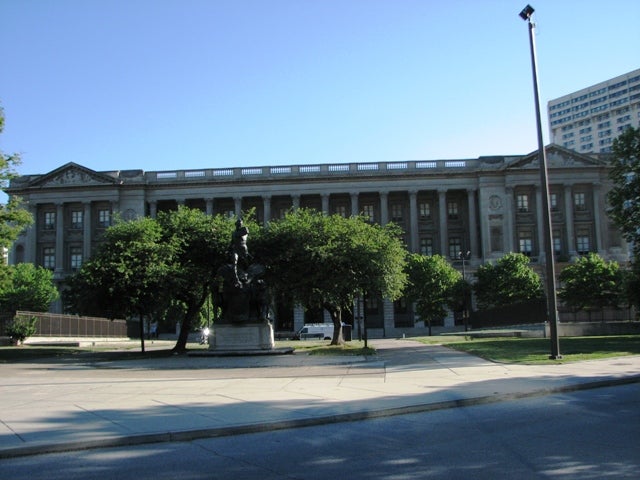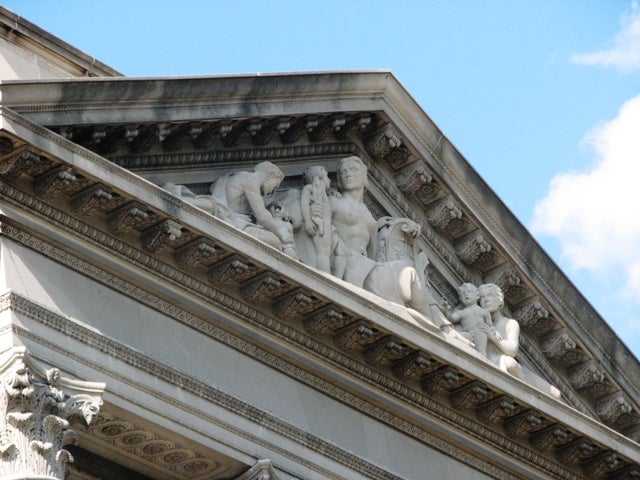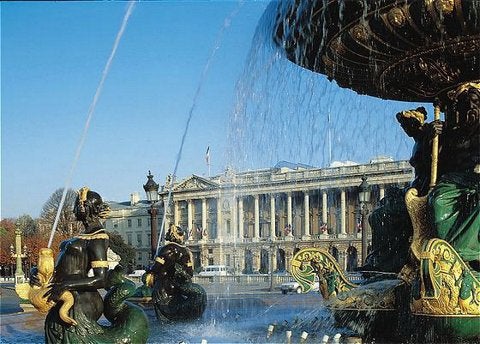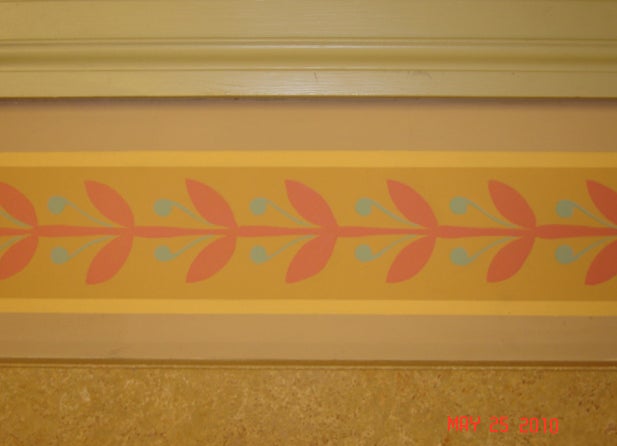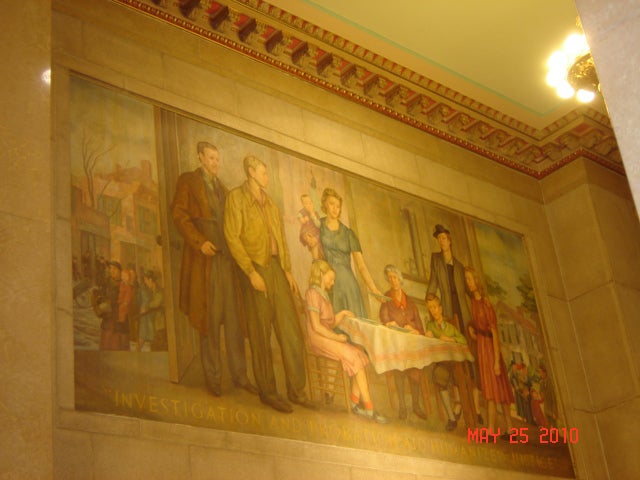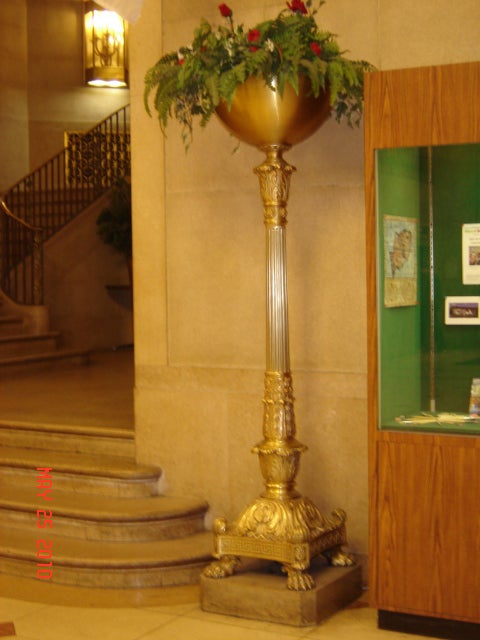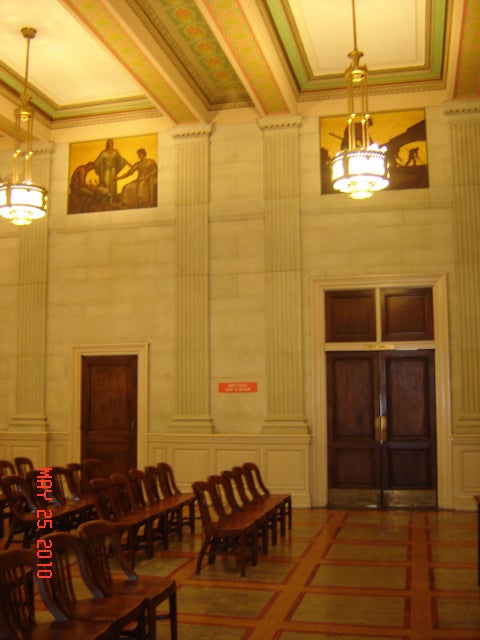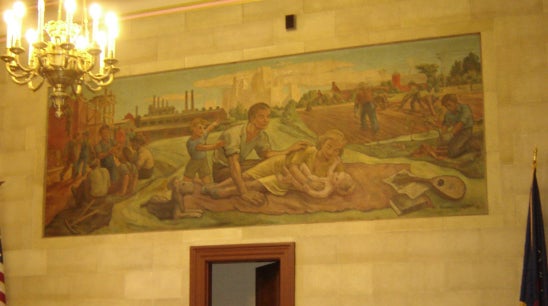Preservationists worried about other Family Court building
June 9, 2010
By Alan Jaffe
For PlanPhilly
While a legal storm swirls around the deals made for a new Family Court at 15th and Arch Streets, clouds have also formed over the old building facing the Benjamin Franklin Parkway.
The neoclassical courthouse, erected in 1938-1941, is “among Philadelphia’s most significant public buildings,” according to the Preservation Alliance for Greater Philadelphia, which is circulating an online petition calling for a task force to study the future use of the site and asking for a transparent process in the decision-making.
At a May 21 press conference announcing the new court plan, Gov. Rendell promised $20 million in state funds to transform the old building into a luxury hotel and museum. Mayor Nutter said at the same event that the city would issue a request for proposals from developers this month.
But preservationists are worried the selection process may be rushed and result in bad choices for the Parkway site. The revelations about the legal deals and investigations surrounding the new site haven’t provided cause for confidence.
Modeled after a hotel
The architect of the building between 18th and 19th Streets on Vine Street was John T. Windrim, who a few years before had designed the Franklin Institute at 20th and the Parkway. Windrim, who also designed Wills Hospital, Jefferson Medical College, the Research Institute of Lankenau Hospital and Presbyterian Hospital, had been asked to create a building that would be a companion piece to Horace Trumbauer’s 1926 Free Library. The two buildings are meant to replicate the twin buildings of the Hotel de Crillon in Paris.
The Family Court was built by the Depression-era Public Works Administration, and its interior “looks as if no expense was spared,” according to Dave Schaaf, director of urban design for the City Planning Commission. Schaaf, who recently toured portions of the courthouse, said the interior is “very good condition. The building has been kept well” and has not been altered in “any significant way” since its opening.

The first-floor ceremonial spaces, courtrooms and waiting chambers are made of limestone and granite and designed in symmetrical, Beaux Arts style. But it was the art and other adornments that most impressed Schaaf. They include a gallery of “extremely handsome” PWA murals and a frieze of American heroes, artists, writers and inventors such as Henry Ford and Thomas Edison. Stained-glass windows in the elaborate lobby of the building, which depict the virtues of family, were designed by Philadelphia’s D’Ascenza Studios, whose work is found in the Washington National Cathedral, Folger Shakespeare Library, and Riverside Church in New York City, and includes the “Nipper” window in Camden’s former RCA-Victor Building.
Bronze chandeliers and majestic torcheres, original wood office chairs and other furniture, wood stenciling on the beams of the waiting areas, and many other fine details add to the elegance of what Schaaf calls a “special interior” that ranks with the great buildings of Washington, D.C.
The Family Court building “bespeaks of a time when government was truly benevolent and supportive of the goals of society in promoting the arts and demonstrating physically what excellence is in public interiors,” he said. “It makes you feel good to be in there.”
Hotel with museum, or vice versa?
The plan to turn the court building into a hotel and museum, as the Governor and Mayor reiterated at a press conference about Parkway landscape improvements on June 7, seems like a reasonable idea to preservationists.
“There is nothing wrong with a mixed-use project that has public and private uses,” said John Gallery, executive director of the Preservation Alliance for Greater Philadelphia. “Trying to find some institutional use that would be able to occupy the entire building and being able to afford to make whatever renovations, that seems a challenge.”
But Gallery said the city must first identify a “reasonable program for cultural uses in the building, things that would be a further attraction for people coming to the Parkway.”
Once that best use is determined, planners need to figure out how much space will be needed in the building. “Then look at other uses – even possibly a hotel,” Gallery said. “But don’t have those other uses be the ones that are driving the deal, which I think is the implication of the statement the Governor made.” The city should “find the cultural uses first, and then consider what are the other options,” Gallery said.
The $20 million proffered by the state for building transformation creates an opportunity and a problem, he also said.
“It creates the possibility to have cultural uses in the building if you have public monies of that magnitude. The problem is that we need more time than the time left in the Governor’s term to figure out what really is the right way to use the building,” he said. “I think the city is trying to figure out how do they deal with those two issues.
“How do they do something – which is the RFP that the Mayor made reference to – that gives something tangible enough to allow the Governor to make the commitment of the funds, but is still flexible enough to allow a longer-term process for figuring out public and private uses for the building?”
Complicating matters are the layers of controversy peeling back from the dealings for a new Family Court on Arch Street. Each front-page revelation delays the issuance of an RFP for the old building.
Once the request is made, “you’d have to give people responding a very short period of time. And you’d have to make a very quick selection,” Gallery said.
“And that concerns me. Getting someone into position, deciding on the developer of this project hastily, could easily lead to the wrong choice.”
Check out Preservation Alliance outreach
Contact the writer at alanjaffe@mac.com.
WHYY is your source for fact-based, in-depth journalism and information. As a nonprofit organization, we rely on financial support from readers like you. Please give today.





